4 Ways to Activate Your Adrenaline at Laie Point
A short guide to Laie Point, and getting the most out of one of the highlights of visiting Laie
One. Two. Three. You experience that jittery moment as your fear resolves into exhilaration and you spring from the basalt cliff off Laie Point. You fall through the air, weightless for a moment, before plunging into the invigorating blue water. Beneath the surface, you open your eyes and watch the bubbles retreat upwards, then swim to join them.
Cliff jumping is just one of the ways to get your heart going at the Laie point. You can also swim to an island, find a cave, and explore the reef shelf. Or you can stand around and look off at Oahu’s Windward Coast like the rest of the visitors.
Jumping the Point
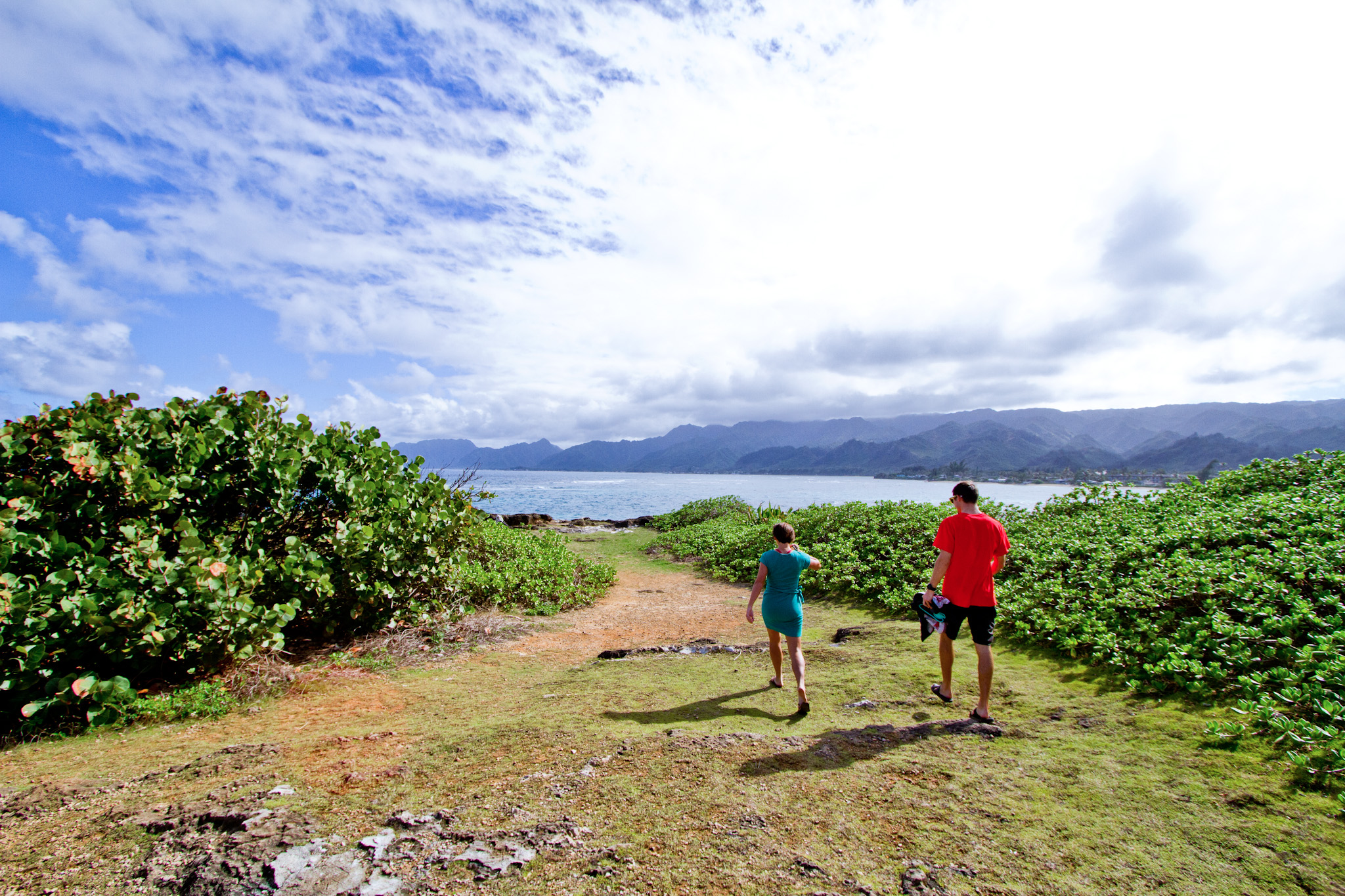
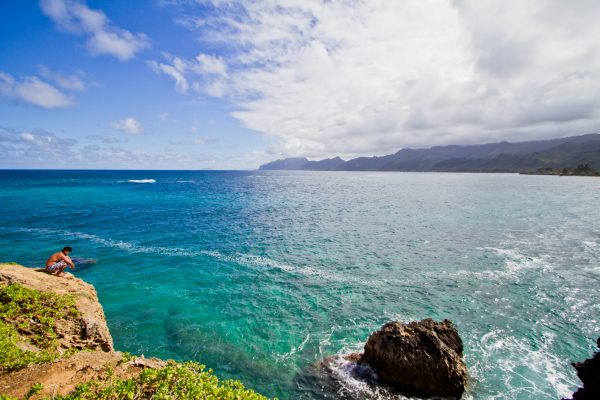
Contemplating the leap
Where to jump
When you pull into the parking area, walk to the south side of the point and look for these cement platforms.

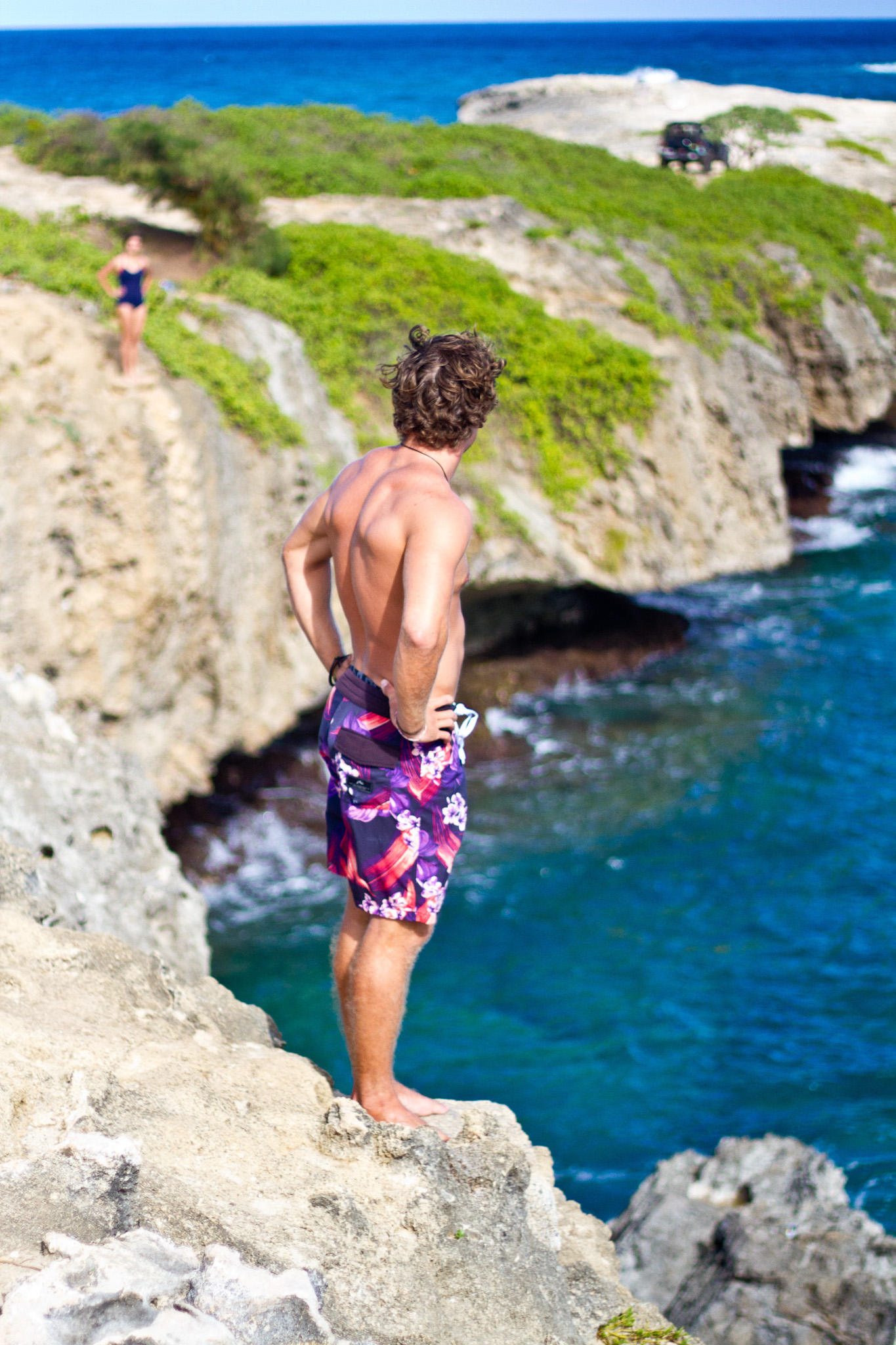
It’s wise to check the depth first but this is where you will jump.
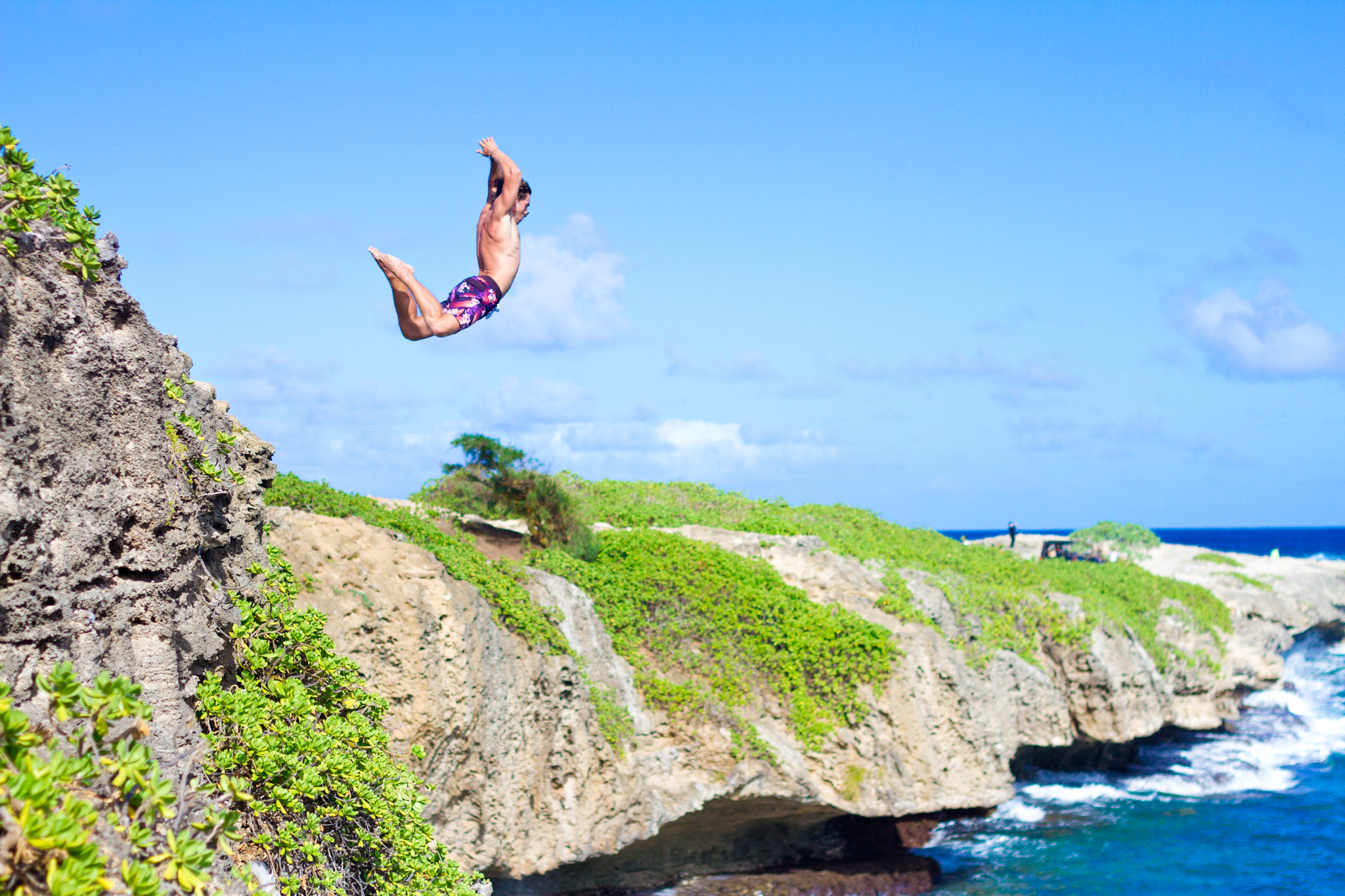
It is also advisable to have a photographer on hand to document your amazing feat.
Where to climb out
The razor-like reef can be dangerous if the waves are big and you don’t know where to get out. This little canyon is your key to getting up to the top of the cliff.
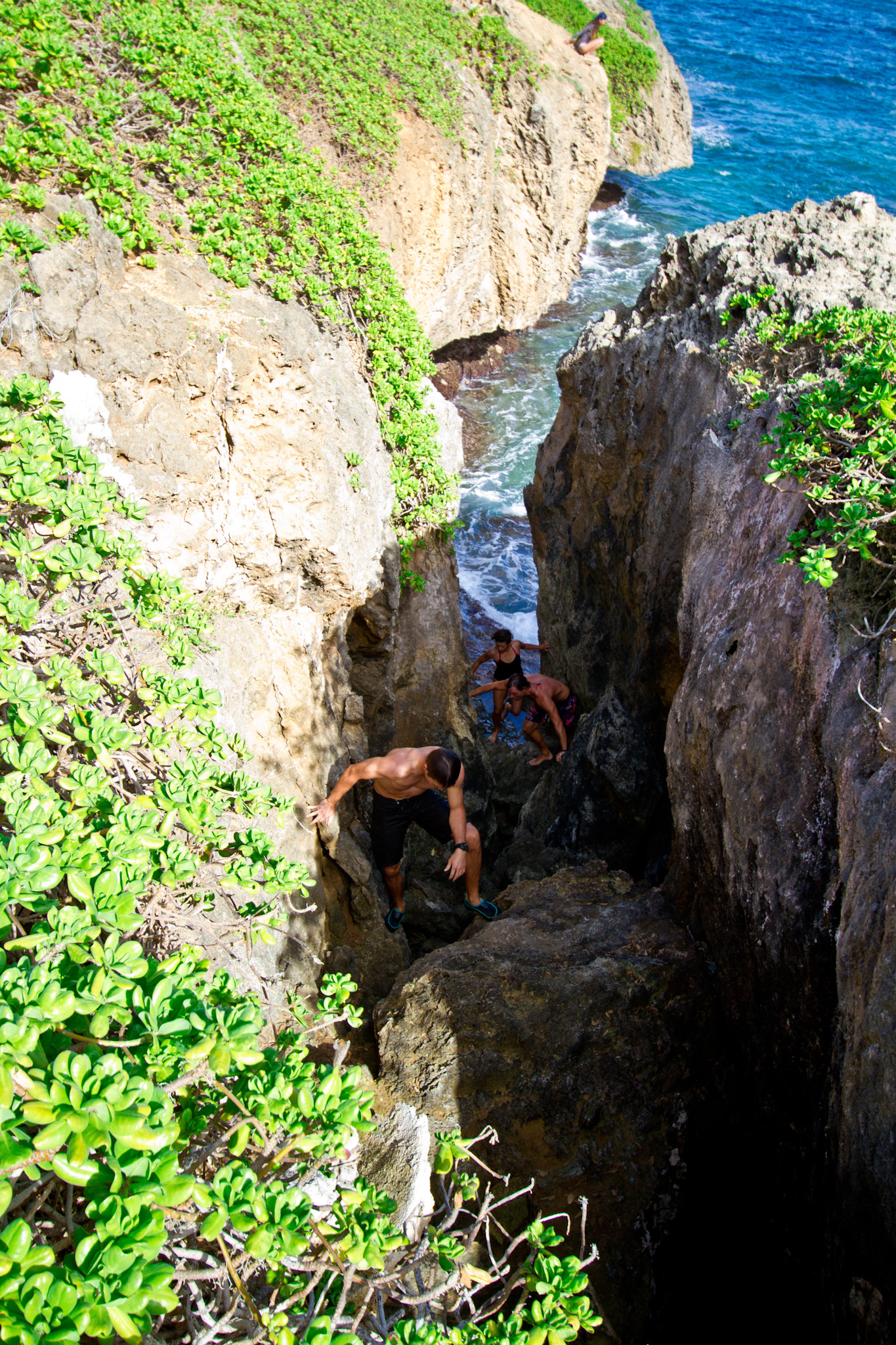
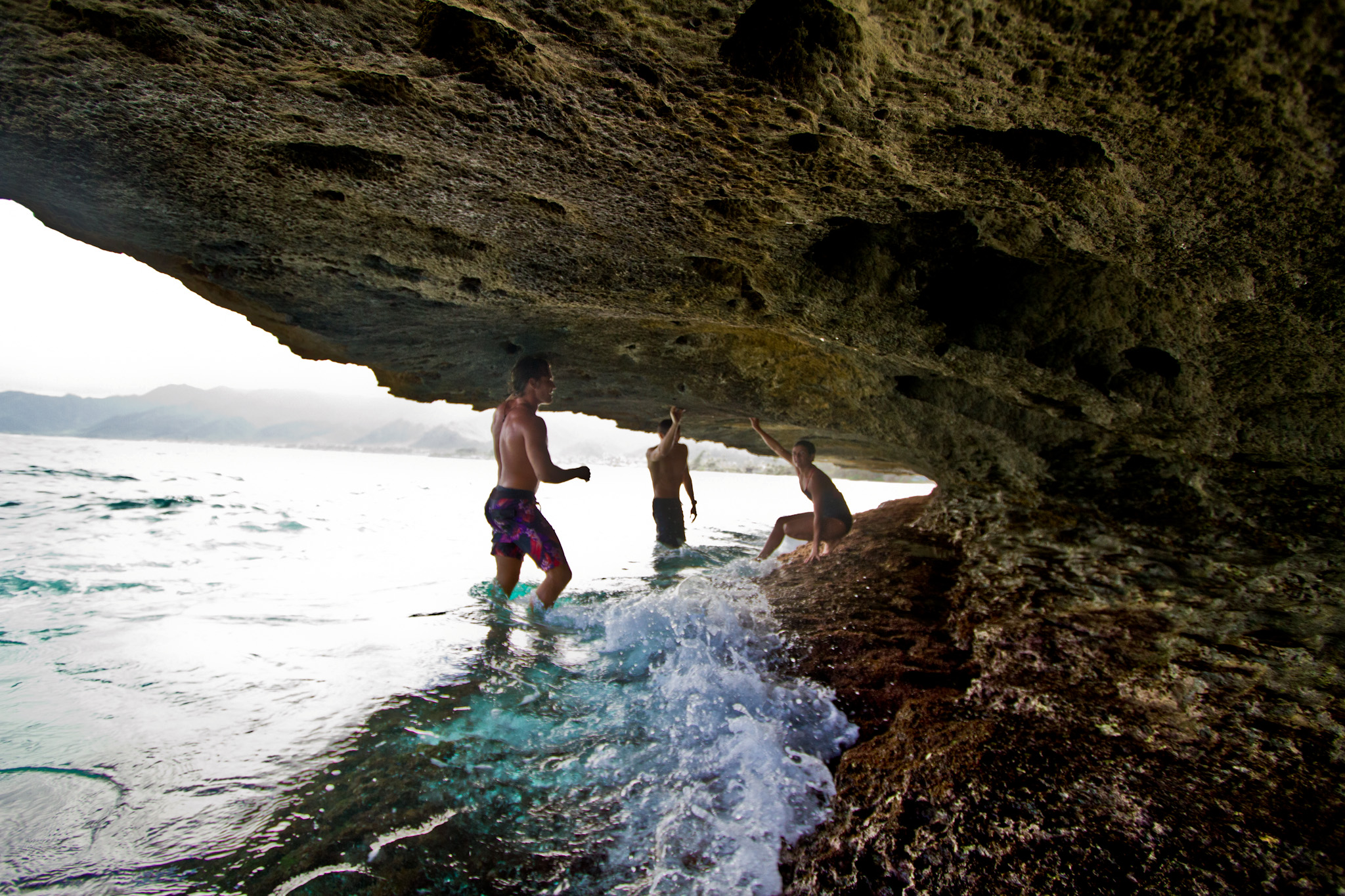
This is where jumpers should climb out from the water. It’s directly under the platform furthest to the west.
Time your exit so a wave pushes you up onto the reef. Grab on with your hands and get your feet underneath you before the wave pulls you back in. The reef isn’t as sharp at this spot. Walk gingerly, maintain your balance, and use your arms and hands for support as you climb out.
Checking the depth
Make the risk less risky by climbing down and checking the depth beforehand. I have had experiences where both feet touch the bottom after a jump and I’ve also had times where I didn’t touch the bottom at all. A lot depends on the tide and the timing of your jump. Have one person climb down and swim to check the depth. Have another stand on the platform so the person in the water can check the depth where the jumper will be landing.
Climbing on top of the arch island (Kukuihoolua)
This is not an experience for beginners. The reef is substantially sharper on this island and if you arn’t swimming out there on a calm day, you have a high probability of drowning or being seriously hurt.
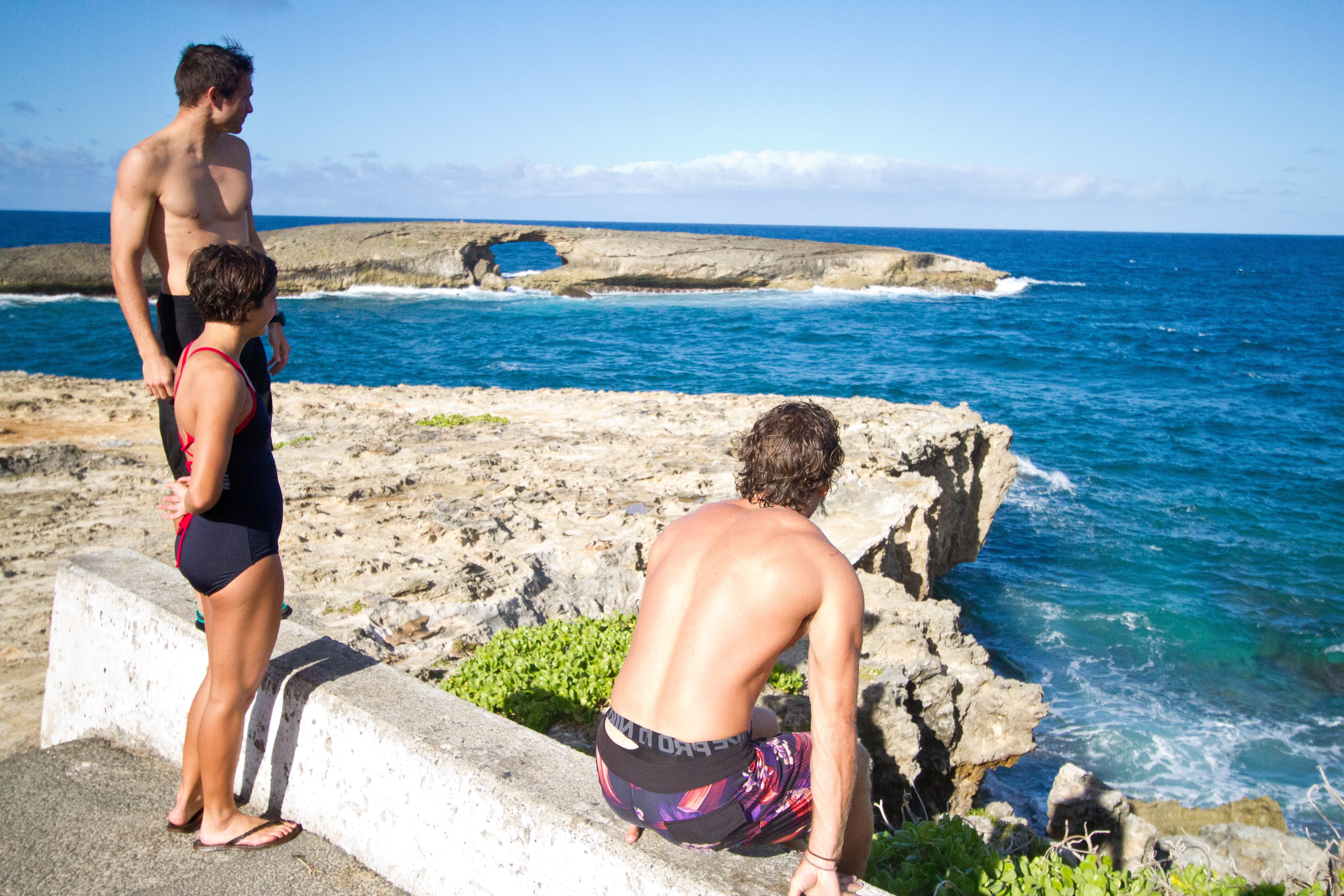
 Having some sort of protection for your feet is a must. We opted to just keep our flippers on.
Having some sort of protection for your feet is a must. We opted to just keep our flippers on.
Also, If the conditions are like this, it is not a good idea to swim out to the arch unless you know what you are doing.

Timing is everything when getting on the islet. You’ve gotta wait for the optimal time when they ocean is working with you, but not too late or it will suck you back in with the possibility of getting raked across the sharp rocks. If you’re looking for something to get your adrenaline flowing, this will do it, especially if you go on a day like this one.

From the top, you get rewarded with a nice view of Laie and a panorama of the windward coast. There were also bits of stainless steel tools and junk from the last shipwreck inside the arch area of the island, pretty cool.
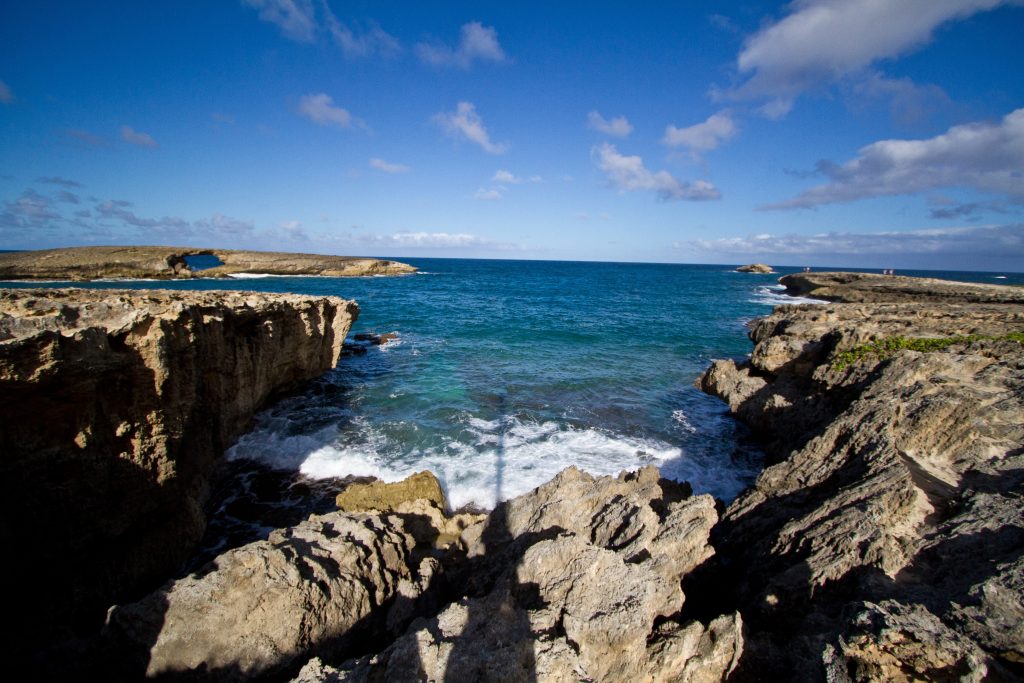
Getting back to the point can be a challenge. Depending on conditions, it might be easiest to just head right into the crook of the point. It gets shallow, so be sure your feet are protected and some type of hand protection would be nice too. Take your time and work with the waves, keep your breathing calm and stay focused and you should be fine. Depending on conditions, there may be easier ways up, but this is just one of them.
Exploring the cave at low tide
The cave is hidden pretty well so it might take a little exploring to find it. If you are facing the end of the point, walk to the end of the parking lot where the cement barrier is and go to the left to walk around it.
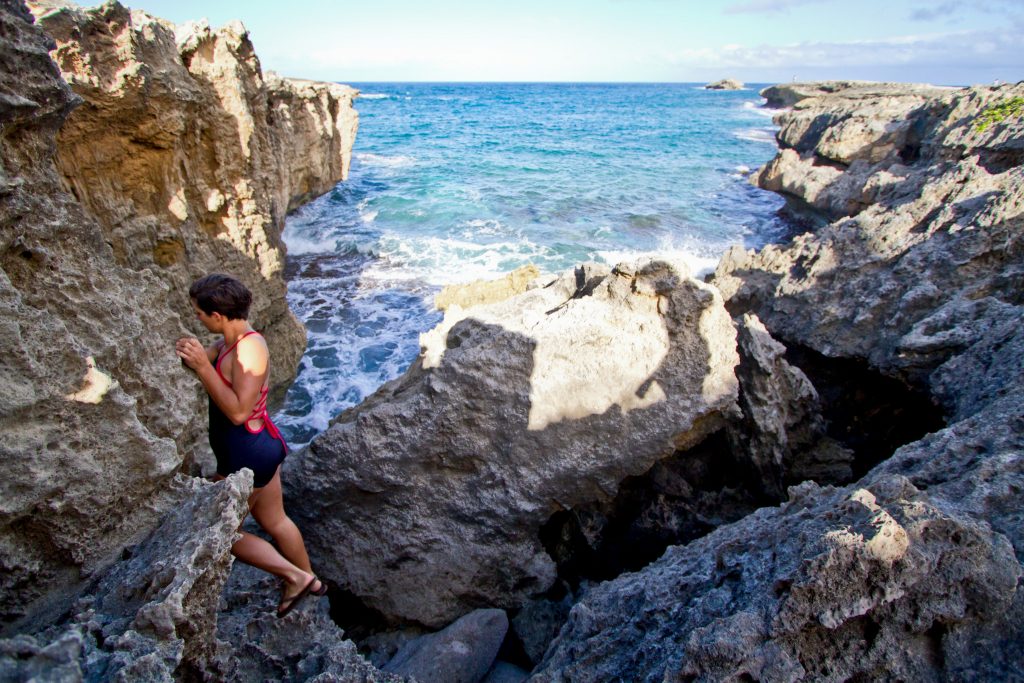
Walk towards the water towards this view and go left down towards the water
After you shimmy along the cliff for a few feet, walk along the reef towards the water. You should see some buoys wedged down in the rocks behind you and to the right. There’s a ledge off to the left of the reef you’re standing on.
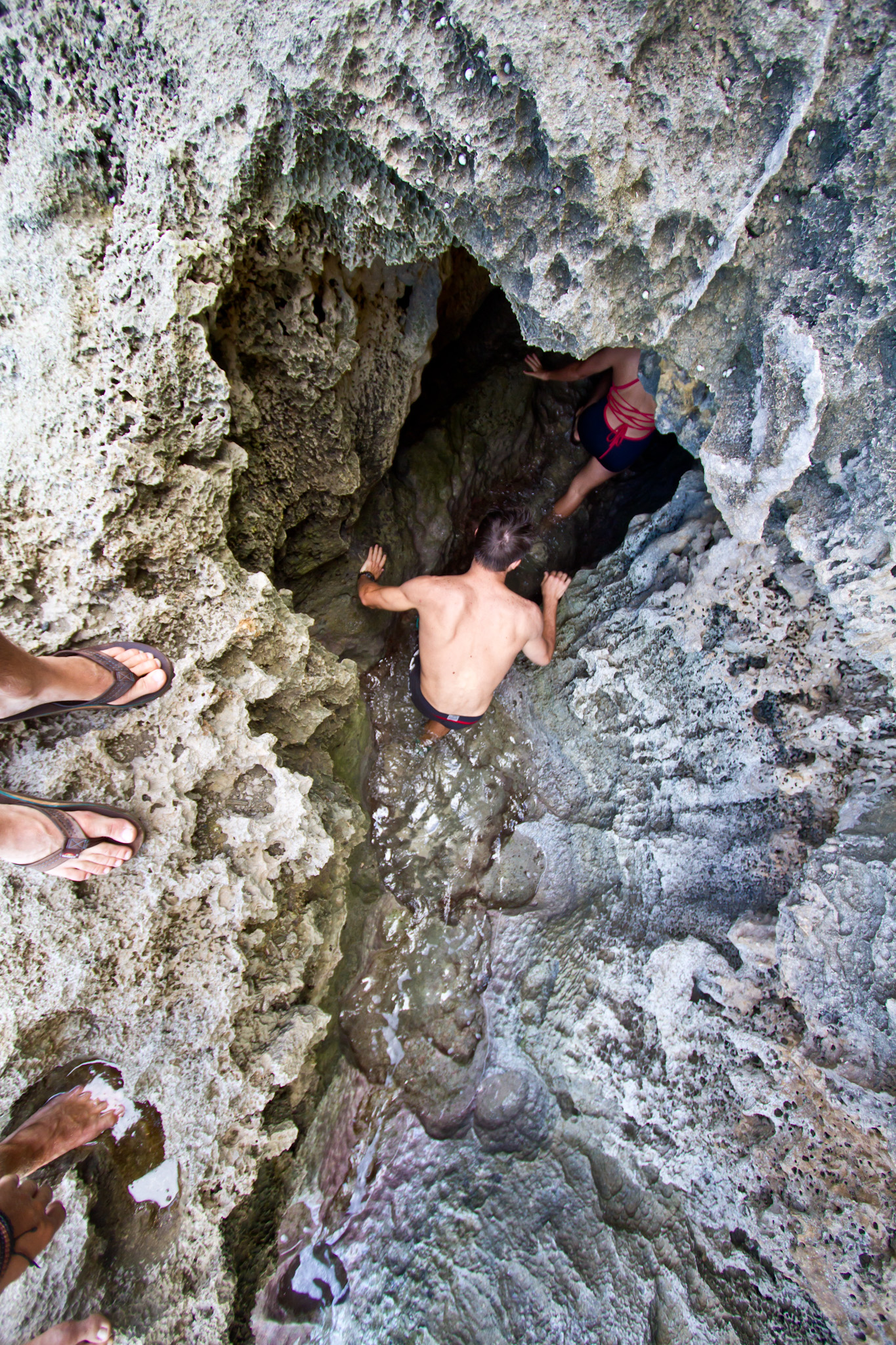
Water should be at the base of this ledge. If the tide is low, climb down in and follow the ravine to the cave. Only do this at low tide. Sea caves are really dangerous if you decide to hang out there when a storm hits or high tide comes along.
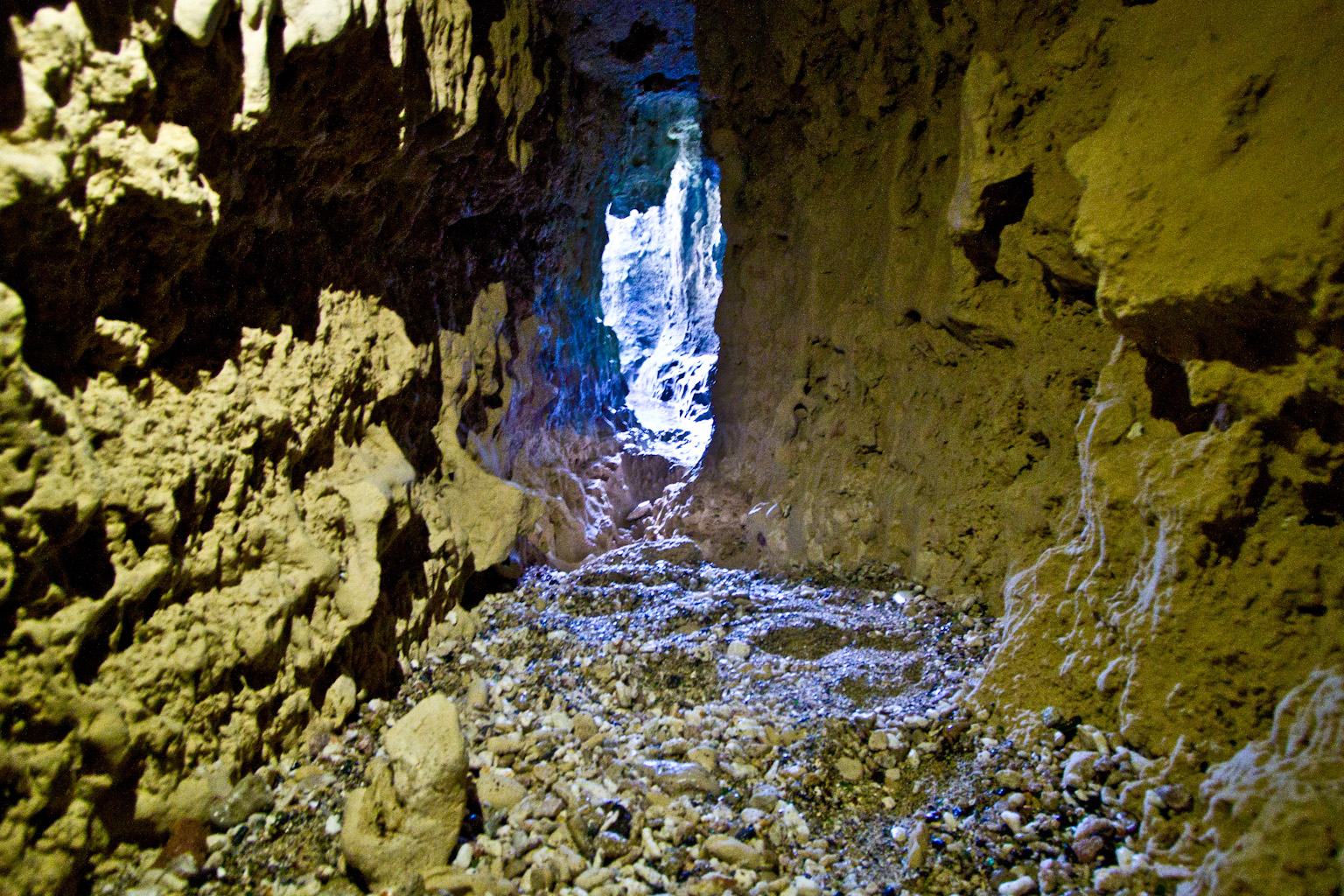
Exploring the reef shelf
Exploring the shelf where you climb out is a way to be eye level with the water instead of looking down on top of it from the cliff. It gives you a view of the Koolau mountain range, bikini beach, and the cave like cliff reaching overtop of you. You can also look for fish in the pockets of water on the reef.
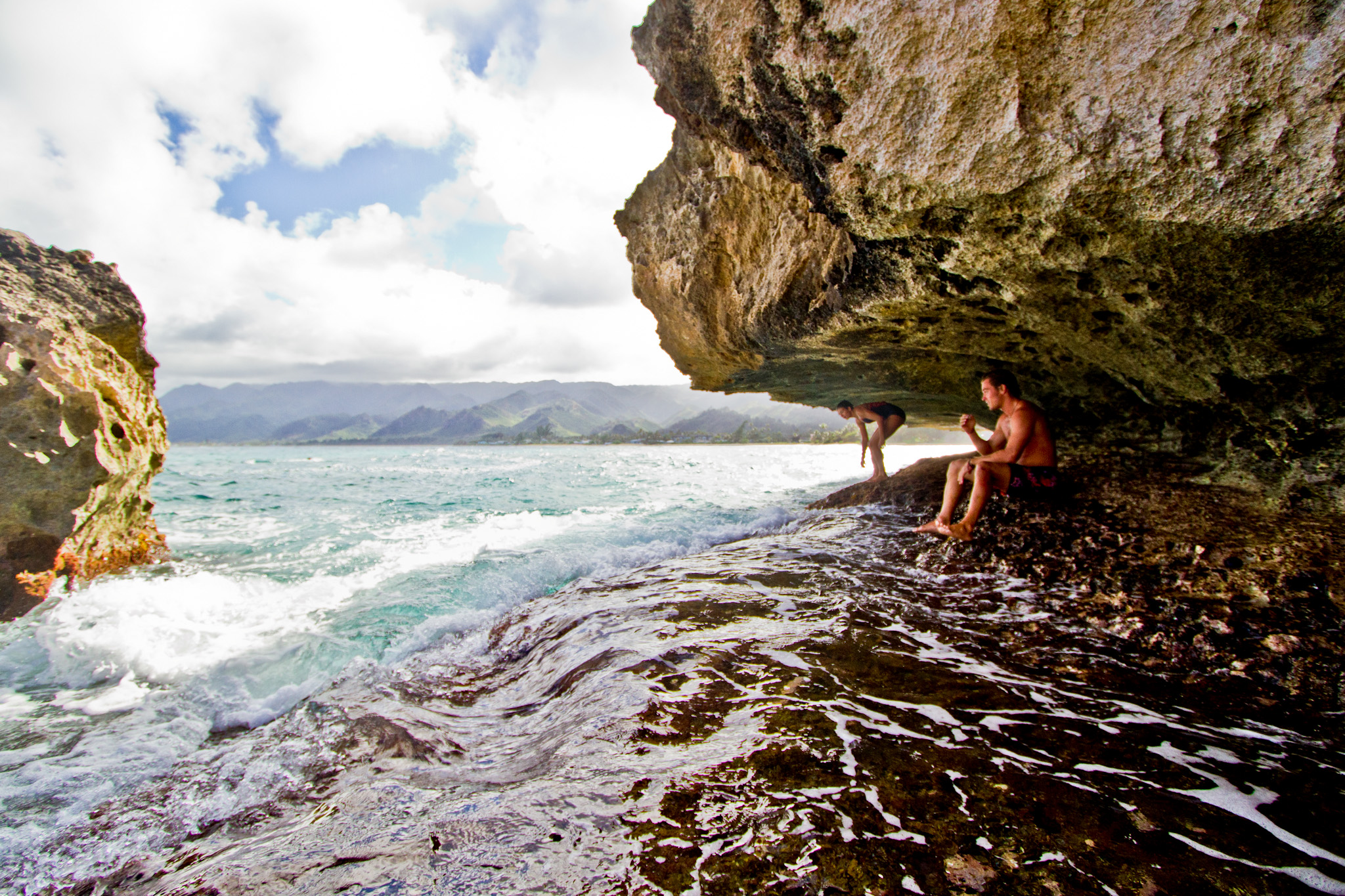
There are tour operators who are totally up for taking you on these types of “off the beaten path” adventures. I’d much rather you experience these types of activities with an expert than have people getting injured trying it without the proper instruction. I’ll be including links to those tour operators soon.
Until then, feel free to give us a call at 808-498-1894
DISCLAIMER: Blog posts on ActiveOahu.com are for entertainment purposes only and do not serve as an official guide of any type. The information presented on ActiveOahu.com has not been vetted for accuracy, safety or legality. If you attempt any of the hikes, climbs, or other activities documented on ActiveOahu.com you are doing so at your own risk. The author and/or Active Oahu, LLC is not responsible for loss, damages, legal fees, medical fees, injury or death incurred as a result of your actions taken after visiting this website.
